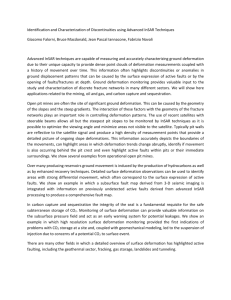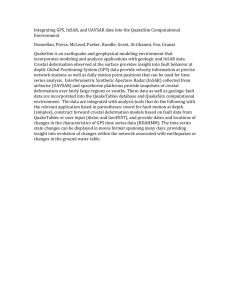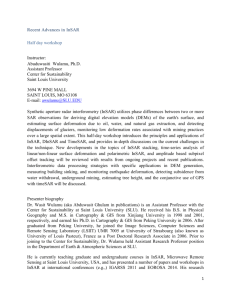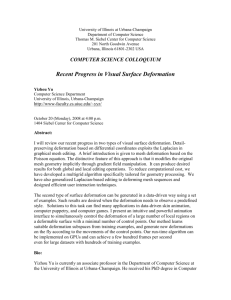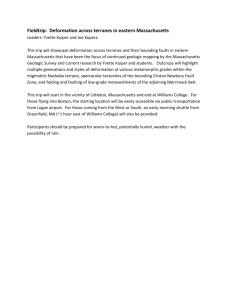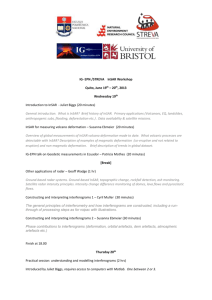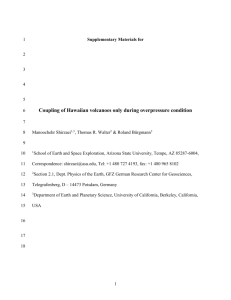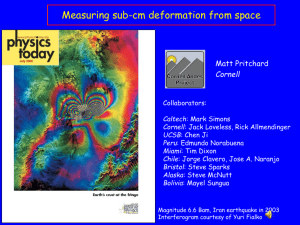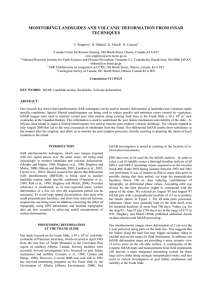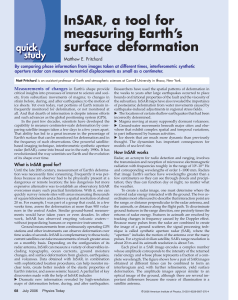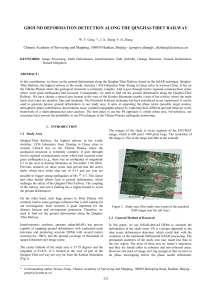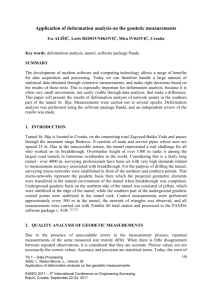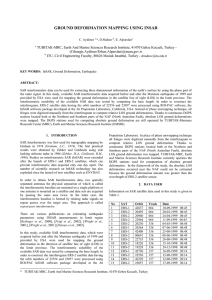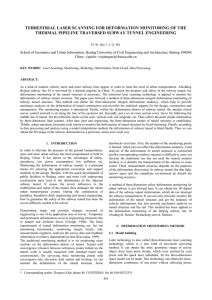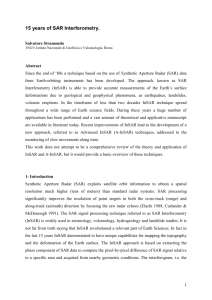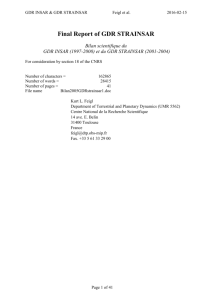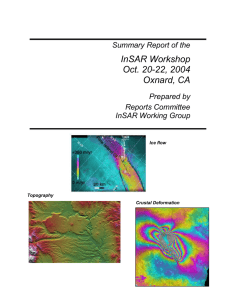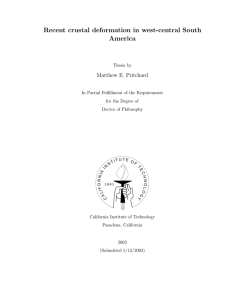Signature of tunnelling-induced ground deformation in
advertisement
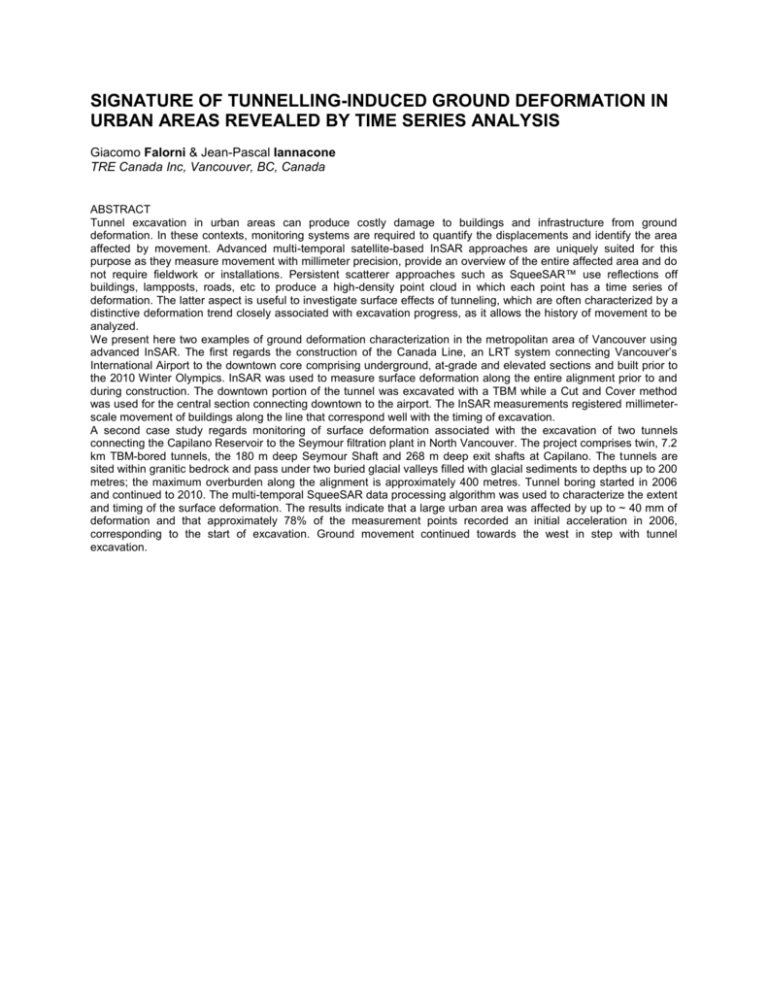
SIGNATURE OF TUNNELLING-INDUCED GROUND DEFORMATION IN URBAN AREAS REVEALED BY TIME SERIES ANALYSIS Giacomo Falorni & Jean-Pascal Iannacone TRE Canada Inc, Vancouver, BC, Canada ABSTRACT Tunnel excavation in urban areas can produce costly damage to buildings and infrastructure from ground deformation. In these contexts, monitoring systems are required to quantify the displacements and identify the area affected by movement. Advanced multi-temporal satellite-based InSAR approaches are uniquely suited for this purpose as they measure movement with millimeter precision, provide an overview of the entire affected area and do not require fieldwork or installations. Persistent scatterer approaches such as SqueeSAR™ use reflections off buildings, lampposts, roads, etc to produce a high-density point cloud in which each point has a time series of deformation. The latter aspect is useful to investigate surface effects of tunneling, which are often characterized by a distinctive deformation trend closely associated with excavation progress, as it allows the history of movement to be analyzed. We present here two examples of ground deformation characterization in the metropolitan area of Vancouver using advanced InSAR. The first regards the construction of the Canada Line, an LRT system connecting Vancouver’s International Airport to the downtown core comprising underground, at-grade and elevated sections and built prior to the 2010 Winter Olympics. InSAR was used to measure surface deformation along the entire alignment prior to and during construction. The downtown portion of the tunnel was excavated with a TBM while a Cut and Cover method was used for the central section connecting downtown to the airport. The InSAR measurements registered millimeterscale movement of buildings along the line that correspond well with the timing of excavation. A second case study regards monitoring of surface deformation associated with the excavation of two tunnels connecting the Capilano Reservoir to the Seymour filtration plant in North Vancouver. The project comprises twin, 7.2 km TBM-bored tunnels, the 180 m deep Seymour Shaft and 268 m deep exit shafts at Capilano. The tunnels are sited within granitic bedrock and pass under two buried glacial valleys filled with glacial sediments to depths up to 200 metres; the maximum overburden along the alignment is approximately 400 metres. Tunnel boring started in 2006 and continued to 2010. The multi-temporal SqueeSAR data processing algorithm was used to characterize the extent and timing of the surface deformation. The results indicate that a large urban area was affected by up to ~ 40 mm of deformation and that approximately 78% of the measurement points recorded an initial acceleration in 2006, corresponding to the start of excavation. Ground movement continued towards the west in step with tunnel excavation.

